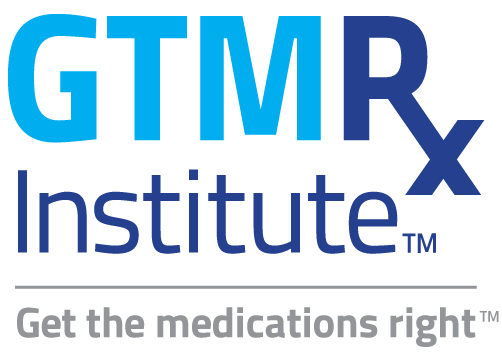
By Katherine H. Capps, Co-Founder and Executive Director, GTMRx Institute
June 5, 2020
What we learned: Forthcoming Blueprint frames the future of medication optimization
It’s time for a change. Now we have a blueprint for what that change should look like.
The GTMRx Institute will soon release a report. A year in the making, the Blueprint for Change creates a roadmap for the Institute’s work as we move forward over the next 12-24 months to engage physicians, clinical pharmacists and other team members raising awareness of the barriers, value and benefits of a more rational approach to medication use.
We intend for the Blueprint to guide system-wide changes that optimize medication use via practice and care delivery transformation, payment and policy reform, health IT & AI and precision medicine.
You’ll be hearing more about our work over the coming weeks but first, some background.
Why this? Why now?
We continue to be enthralled by advancements in biologics, drug development and diagnostics. But these amazing advances are not reaching the bedside in an efficient and timely manner because we lack a rational and integrated medication use process. As a result, patients continue to suffer. We have known for years that medication-related problems are a top preventable cause of serious adverse health events and avoidable hospital readmissions.[1] We have to fix the problem – now – to save 275,00 lives lost and the $528B a year wasted due to non-optimized drugs that make people sick, are wrong, or that are not taken correctly.[2]
We can change that. Our ability to optimize medication use is within our reach, and we believe the path forward is through a team-based process of care, comprehensive medication management (CMM).
The GTMRx Blueprint will provide key considerations around leveraging technology to enable practice, using diagnostics to target the correct therapies, creating interprofessional teams centered around the patient’s needs and integrating medication experts—clinical pharmacists—as essential members of the care team working in collaborative practice with physicians.
Practices around the country demonstrate the value-proposition for CMM each day. The return on investment (ROI) of team-based medication management services has been well documented, as articulated by Cipolle, et al., ”to average around 3:1 to 5:1 and can be as high as 12:1, resulting in a reduction in the direct mean medical cost of between $1200 and $1872 per patient per year for each of the first 5 years for those patients with chronic diseases such as diabetes, cardiovascular health issues, asthma and depression.”[3]
A few key findings
Now, I’d like to share just a few highlights of what we’ve learned.
Optimal patient care requires optimal medication use: The way we manage and evaluate medication use matters. We must move to a more rational, team-based, systematic approach that effectively and efficiently connects the right medications to the right patient with the right dosage at the right time to achieve clinical goals of therapy.
Optimal medication use requires better data that is actionable: Having the right data, at the right time, at the point of care is essential. By overcoming barriers to information access through technology, all members of the patient care team have full access to all relevant clinical and health care data necessary to provide CMM services at the point of care. Most health information technology systems do not capture the appropriate data—information needed to comprehensively manage a patient’s medication regimen or evaluate whether clinical goals of therapy have been met.
Optimal medication use may require advanced diagnostics: Precision medicine enabled by advanced diagnostics enhances the provider’s knowledge of an individual’s response to a specific drug. Problems such as incorrect dosing and adverse drug events may be avoided with use of advanced and complimentary diagnostics to target correct therapies informing the medication plan created during the CMM process.
New payment models will be necessary for broad access to CMM: The movement to payment for value rather than volume necessitates new ways of managing and paying for care. As with most practice-level solutions, financial incentives will drive much of the expansion and scaling needed for broad adoption and access. For value-based models to succeed, they will need to adopt CMM.
Health insurance plan sponsors save more than money from medication optimization: Inherent within plan sponsorship is the fiduciary responsibility to assure that plan assets are used appropriately. Assuring the right medication is used the first time significantly reduces liability risks for fully insured and self-insured plan sponsors.
Transformation cannot be piecemeal: Achieving medication optimization requires an integrated, rational approach that is person-centered and team-based. We believe CMM is that approach. But no matter how promising individual elements of CMM may be, their impact is minimal unless all team members are engaged and CMM is integrated into the practice.
It’s time
Getting the medications right is the decade’s most urgent—and promising—opportunity to save lives and save money. By releasing this Blueprint for Change, the GTMRx Institute hopes to advance acceptance and recognition of CMM. Our intended audience is vast: patients and providers, insurers and employers, policymakers and lawmakers.
The coronavirus pandemic has stripped away any illusions we’ve had about our health care system. It’s broken. CMM offers a remedy. Find out how by signing up for the report when it is released.
[1] OIG Report on Preventable Serious Adverse Events in Hospitalized Medicare Patients. oig.hhs.gov/oei/reports/oei-06-09-00090.pdf
[2] Watanabe, JH, McInnis, T, & Hirsch, JD. “Cost of Prescription Drug–Related Morbidity and Mortality.” Annals of Pharmacotherapy, 2018; 52(9), 829–837..org/10.1177/1060028018765159
[3] Cipolle RJ, Strand L, and Morley P. Pharmaceutical Care Practice: The Patient Centered Approach to Medication Management. Third Edition. New York, NY: McGraw-Hill Medical; 2012.

